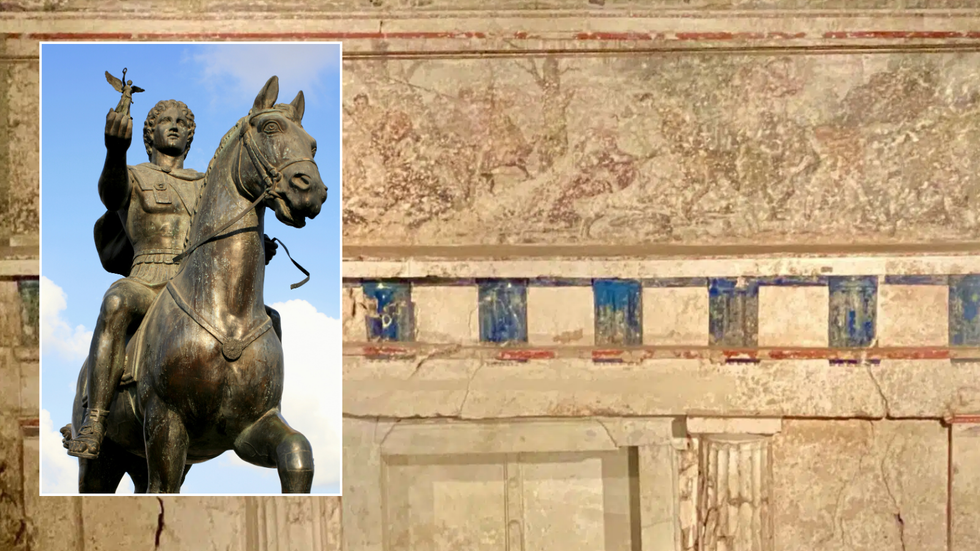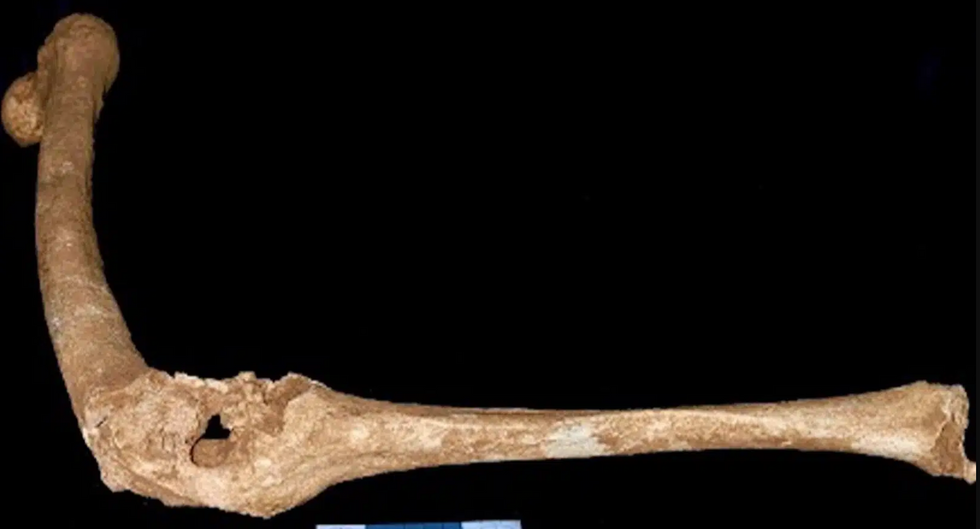Archaeologists in Greece have made a remarkable discovery that could be linked to Alexander the Great.
A team led by Professor Antonis Bartziokas from Democritus University of Thrace has unearthed a piece of purple fabric in a 2,400-year-old tomb in the northern Greek town of Vergina.
The researchers believe the tunic, which was discovered in a royal tomb, may have belonged to the legendary conqueror.
The research team conducted a series of chemical, physical, and microscopic analyses on the fabric.

The researchers believe the tunic, which was discovered in a royal tomb, may have belonged to the legendary conqueror
Getty/A. Bartsiokas
Their findings revealed that the material was cotton, which was a rare commodity in ancient Greece.
Professor Antonios Bartziokas told the Greek Reporter: “There is a clear match between the material that they found in the coffin and the tunic depicted on the frieze outside Tomb II.
“Another important clue is that the tunic was made of cotton. Cotton was foreign to ancient Greece, they imported it from Persia.”
The purple fabric discovered in the tomb holds significant historical importance. Alexander the Great’s royal tunic was known to be dyed “Tyrian purple,” a colour reserved for royalty in many ancient cultures.
MORE LIKE THIS:
This hue symbolised wealth, power, and divinity, emphasising Alexander’s rank and imperial dominance. The rarity of purple dye made it a luxury item in ancient times.
The fabric was found in the golden ossuary of Tomb II, alongside human remains and a gold wreath.
Since 1977, scientists have been discussing whether the skeleton in Tomb II belonged to Philip II (Alexander’s father), Alexander the Great himself, or his half-brother, Philip III Arrhidaeus.
Professor Bartziokas shared his insights: “Osteological data show that Tomb II belongs to Arrhidaeus, while Tomb I belongs to Philip II.

The fusion of the knee joint is consistent with King Philip II’s
A. Bartsiokas
“Archaeological evidence also supports this. For example, the skeleton in Tomb I shows a synostosis (fusion) of the thigh with the leg.
“This clearly indicates that this skeleton belongs to Alexander’s father, as Philip II was limping.
“Additionally, the presence of a newborn in Tomb I aligns with historical records mentioning Cleopatra, Philip II’s youngest wife. These discoveries offer new insights into the royal Macedonian dynasty.”